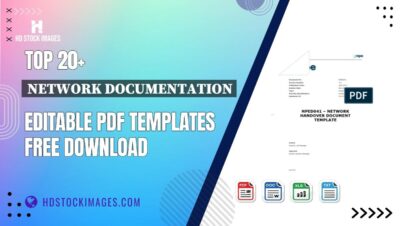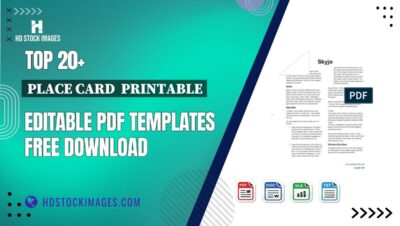Adding audio to your Google Slides presentations can elevate your content and engage your audience in a whole new way. Whether you want to include background music, narrate your slides, or insert fun sound effects, the process is straightforward. Today, we’re focusing on how you can seamlessly incorporate audio from YouTube into your slides. So, let’s dive into this effective enhancement that can make your presentations more lively and dynamic!
Why Use YouTube Audio in Your Presentations?

YouTube is a treasure trove of audio content—music, sound effects, and even clips that can perfectly complement your presentation. Here are some compelling reasons to consider using YouTube audio:
- Variety and Accessibility: With millions of videos available, finding the perfect audio clip for your theme or topic is easy. You can access a wide range of genres and styles without worrying about copyright issues.
- Quality Content: Many creators produce high-quality audio that can enhance the professionalism of your presentation. You can find everything from soothing background music to energetic tracks that can invigorate your talk.
- Engagement: Adding audio helps capture your audience’s attention. A well-placed sound effect or background music can create an emotional connection and keep your viewers interested.
- Free Resources: Most YouTube audio content is free to use, especially if you stick to royalty-free music. This makes it a budget-friendly option for educators, students, and professionals alike.
To illustrate how YouTube audio can enhance your presentations, consider a few practical examples:
- Background Music: Imagine presenting on a creative topic like art or music history. Utilizing soft background music can set the mood and keep the audience engaged without overpowering your voice.
- Sound Effects: If you’re discussing technology or gaming, sound effects can add a fun and relatable layer. A simple click sound when transitioning slides can draw in tech-savvy audiences.
- Narration: Need to explain complex diagrams or concepts? You can record your voice over a video or use YouTube clips to narrate key points, making your slides more informative.
Using YouTube audio in your presentations not only enhances the auditory experience but also helps in connecting with your audience on a deeper level. So, next time you prepare a presentation, don’t overlook the power of sound!
Also Read This: How Much Does Hickok45 Make on YouTube
3. Step-by-Step Guide to Insert Audio from YouTube

Ready to elevate your presentations by adding some catchy audio from YouTube? It’s easier than you might think! Follow these simple steps to insert audio into your Google Slides:
- Find Your YouTube Audio: Start by searching for the YouTube video that contains the audio clip you want. Once you find it, copy the URL from the address bar.
- Use a YouTube to MP3 Converter: To get the audio out of the video, you’ll need a converter. Websites like ytmp3.cc or convertmp3.io can help. Just paste the YouTube URL into the converter, select MP3 as the format, and click the convert button.
- Download the Audio File: Once the conversion is complete, download the MP3 file to your computer. Make sure to save it in a location that’s easy to remember, like your desktop or a dedicated folder.
- Open Your Google Slides Presentation: Navigate to the presentation where you want to add the audio. Click on the slide where you’d like the audio to start playing.
- Insert the Audio: Go to the top menu and select Insert > Audio. A window will pop up allowing you to upload your audio file. Click on Upload and find the MP3 file you downloaded earlier.
- Adjust Settings: After inserting the audio, a small audio icon will appear on your slide. Click on it and adjust the settings as needed. You can choose to have the audio play automatically or on click. Don’t forget to adjust the volume if necessary!
- Test Your Presentation: Finally, hit the present button to test your slide and ensure the audio plays as expected. Make any necessary adjustments and you’re all set!
And there you go! With these steps, you can seamlessly integrate YouTube audio into your Google Slides presentations. Get ready to impress your audience with dynamic soundscapes!
Also Read This: Finding Full Episodes of ‘Are You Being Served?’ on YouTube
4. Tips for Selecting the Right YouTube Audio

Selecting the right audio for your presentation can make all the difference. Here are some tips to help you choose the perfect soundtrack:
- Consider the Mood: Think about the tone of your presentation. Are you aiming for something upbeat, or do you need a more serious vibe? For a fun project, try something like “Happy” by Pharrell Williams. For a more professional touch, consider ambient sounds or soft instrumental music.
- Length Matters: Ensure the audio track is the appropriate length for your slide duration. If it’s too short, it might cut off before you finish speaking, and if it’s too long, it could distract your audience. A good practice is to aim for tracks around the same length as your slide’s content.
- Check Copyright Restrictions: Not all audio on YouTube is free to use. Look for videos labeled as Creative Commons or those that explicitly state you can use them in your projects. Always give credit where it’s due!
- Test Multiple Options: Don’t settle for the first audio clip you find. Experiment with a few different tracks to see which one fits best. Play around with contrasting styles to see how they affect the feel of your presentation.
- Ask for Feedback: If you’re unsure, ask a friend or colleague to listen to your audio choices. They can provide fresh insights and help you gauge which audio resonates most.
With these tips in mind, you’ll be well on your way to selecting the perfect audio that enhances your presentation and keeps your audience engaged. Happy presenting!
Also Read This: How to Monetize Your YouTube Channel: Insights from Reddit Users
5. Common Issues and Troubleshooting

Using audio from YouTube in Google Slides can sometimes feel like navigating a maze. But don’t worry! Here are some common issues you might encounter and how to solve them:
- Audio Not Playing: This is one of the most frequent issues. Ensure that your audio file is linked correctly. Double-check the embed link and make sure it fits the format required by Google Slides.
- Internet Connection Problems: If your presentation relies on streaming audio, a weak or unstable internet connection can disrupt playback. Always test your slides in advance with a reliable connection.
- Audio Quality Issues: Sometimes, the sound might not be clear. Ensure that you are using high-quality audio sources. If possible, try to download a higher quality version of the audio or consider using audio editing tools to enhance it.
- Permission Settings: If you’re sharing your presentation with others, make sure that the sharing settings allow them to access the audio. They might need permission to view the linked YouTube video.
- Compatibility with Other Devices: If your presentation is intended for a different device, test it out beforehand. Some devices may have different settings that affect audio playback.
By keeping these common issues in mind, you can troubleshoot effectively and ensure your presentation flows smoothly!
6. Enhancing Your Presentation with Audio Features
Now that you’ve mastered inserting audio from YouTube into your Google Slides, let’s explore how you can enhance your presentation with audio features!
- Background Music: Consider adding subtle background music to set the mood. Just be sure it’s not too distracting! Use royalty-free music that complements your theme.
- Sound Effects: Adding sound effects can make your presentation more engaging. For instance, a light chime when transitioning between slides can grab attention without being overwhelming.
- Voice Narration: Instead of relying solely on text, record your voice explaining key points. This personal touch can make your audience feel more connected. Tools like Audacity can help you create clean audio files.
- Timing Your Audio: Google Slides allows you to set audio to play automatically when a slide opens. This feature can enhance storytelling, especially if your audio correlates with the visuals on the slide.
To really make your audio elements shine, consider these tips:
- Practice Timing: Rehearse your presentation to ensure your audio fits perfectly with your visuals. Timing is everything!
- Test on Different Devices: Play your presentation on various devices to see how the audio performs. Each device can have different sound quality and settings.
- Ask for Feedback: After presenting, gather feedback from your audience. Ask them how the audio enhanced their experience and if there were any issues.
By creatively utilizing audio features, you’ll elevate your presentation from ordinary to extraordinary! Embrace the power of sound to engage your audience and leave a lasting impression.
 admin
admin








